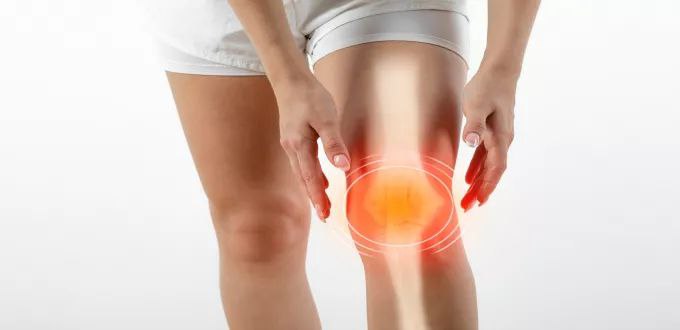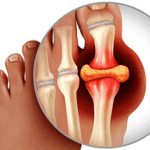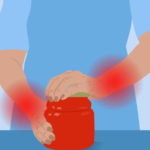No one drug or therapy alone is effective — but a comprehensive approach can ease symptoms
That achy pain, mild swelling and stiffness in your knee after not being active? That’s osteoarthritis. And it’s common, especially as we age.
So it might also be a familiar routine to reach for that bottle of nonsteroidal anti-inflammatory drugs (NSAIDs), like ibuprofen (Motrin®, Advil®) or naproxen (Aleve®), to try to control your symptoms.
While you can take pain-relieving drugs for knee osteoarthritis, they should be used cautiously and only as one part of a more comprehensive approach. Each person is unique, so we have to formulate an individualized treatment plan.
The most important piece of the puzzle
If you have overweight or obesity, the most effective treatment is weight loss. This isn’t surprising. Every extra pound of weight adds two to four pounds of excess pressure on your knees.
Losing weight is probably the most difficult part of the treatment puzzle, but it’s also the most important
A weight loss program should include both diet and exercise. Some people have difficulty exercising to lose weight because their knees hurt. But any type of exercise can help, even strengthening the upper body.
The role physical therapy plays in the process
Physical therapy is definitely beneficial. Improving range of motion and strength in the knee are helpful, but physical therapy for knee osteoarthritis has a large focus on strengthening the hips.
Weak hips put more pressure on the knees. If your hips are strong, when you get up from a chair or go up and down stairs your knees have less work to do.
Everyone with knee osteoarthritis should consult a physical therapist,. Not only will you be taught the right kinds of exercises, a physical therapist also provides valuable instruction about using assistive devices (such as a cane or walker) and modifying activities (such as climbing stairs or getting in and out of a car) to reduce pain.
How to get moving every day
In addition to physical therapy, it’s critical to incorporate regular exercise into your daily routine.
“Joints are built to move. The evidence shows that people who are least active have more arthritis pain than people who do some form of exercise. Choose lower-impact activities, such as bicycling, swimming or exercising in a pool.
Talk to your doctor about a knee brace
Often a knee brace can help. There’s evidence to show that even a simple compression sleeve can decrease pain. These are a good way to start because you can get one at the drugstore.
You can also talk to your doctor about a more customized unloader brace. These take pressure off a portion of the joint. The brace that’s right for you will depend on the severity and location of arthritis, whether primarily in the inner or outer side of the joint or in the kneecap.
Supplements for those with mild pain
For people with milder pain, trying supplements, such as the combination of glucosamine and chondroitin or the spice turmeric.
The evidence for glucosamine and chondroitin is mixed, but they are safe. So it might be worth trying. However, people with a shellfish allergy may not be able to tolerate them. Any effect won’t kick in right away.trying it for six to eight weeks. If you notice improvement, great; if not, then stop it,.
Turmeric has anti-inflammatory properties, and there is some evidence for its usefulness for painful knee arthritis. You can add turmeric to your food or take it as a supplement. It can thin blood, so people who take a blood thinning medication should not use turmeric.
How to use pain medications properly
There are two types of over-the-counter pain medications that can be used for osteoarthritis. Acetaminophen (Tylenol®) is a pain reliever but not an anti-inflammatory. It may help with mild knee pain.
NSAIDs can be more effective because they both relieve pain and reduce inflammation. However, they come with potential side effects and risks. NSAIDs can irritate the lining of the stomach, which may lead to an ulcer or other stomach problems. They also can impair kidney function. Some NSAIDs can increase blood pressure. And they’ve been linked to an increased risk for heart disease.
Because of the risks, against using NSAIDs regularly over long periods of time. Instead, she uses NSAIDs for her patients in two ways. First, people who have a flare-up of pain can take them regularly (meaning every four to six hours, depending on the drug) for three to five days and then stop. Second, they can be used over the long term, but only occasionally, maybe a couple of times a week as needed.
If you’re taking NSAIDs several times a day for long periods of time,reducing their use by maximizing the other treatment strategies. She also suggests trying a topical NSAID, such as diclofenac (Voltaren Gel®, Pennsaid®), which has fewer potential side effects.
Opioid pain relievers are discouraged for long-term treatment of chronic knee pain. The milder narcotic tramadol might be appropriate for occasional use in some people.
Injections are another low-risk option
If other strategies don’t provide enough relief, injection therapy is an option with low risk.
A corticosteroid injection involves delivering this anti-inflammatory drug directly to the knee. The benefits are typically short lived. But it varies from person to person. I tell my patients the pain relief can last anywhere from a week to a year. One cautionary note with corticosteroids is the potential to increase blood sugar, which is a concern for people with uncontrolled diabetes.
For a possibly longer lasting effect, an injection of hyaluronic acid (also called viscosupplementation) can be tried. Hyaluronic acid is a substance that healthy joints have a lot of and arthritic knees don’t. It takes longer to start working than a corticosteroid injection, but the effect often lasts six months to a year.
Currently, research is being done on the effectiveness of platelet-rich plasma (PRP), which is not yet covered by insurance. PRP involves drawing some blood, spinning it in a centrifuge, and injecting part of it into the knee.
If you’re not able to get your symptoms under control with a combination of these measures, it could be time to talk to your doctor about surgery.





